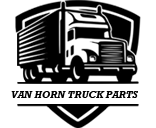
Air Brake Valve Upgrades That Reduce Maintenance Intervals
Semi-truck operators know that downtime equals lost revenue. Every hour spent in the repair bay represents missed deliveries, frustrated customers, and shrinking profit margins. To avoid these conflicts and delays, investing in quality brake valve upgrades pays dividends through reduced maintenance frequency and improved operational efficiency.
The right upgrades can transform your maintenance schedule, so discover the common air brake valve upgrades that reduce maintenance intervals to improve your business operations.
Air Brake Valve Functions and Failure Points
Air brake valves control the flow, pressure, and distribution of compressed air throughout your truck’s braking system. These components work under extreme conditions and face constant pressure cycling, temperature fluctuations, and exposure to contaminants that enter the air system.
Standard brake valves typically fail due to worn seals, corroded internal components, or contamination buildup. Moisture in the air system can also create internal corrosion, while dirt and debris cause premature wear on moving parts. These failures often manifest as air leaks, inconsistent braking pressure, or complete valve malfunction.
Conducting traditional maintenance means addressing these failures reactively and replacing components after problems occur. While it may solve the immediate problem, this process can cause unpredictable maintenance costs and unexpected downtime that disrupts operations. Upgrading to premium valve components introduces preventive maintenance measures with longer service intervals, so you can spend less time and money on frequent maintenance and conduct more business between repairs.
Premium Relay Valve Upgrades
Relay valves amplify brake signal pressure and control air flow to brake chambers. Standard relay valves often require replacement every 12 to 18 months due to diaphragm fatigue and seal degradation. Premium relay valve upgrades, on the other hand, feature improved materials and designs that extend the service life of your vehicles.
Upgraded relay valves incorporate advanced elastomeric compounds that resist cracking and maintain flexibility across wider temperature ranges. These materials handle pressure cycling better than standard components to reduce the frequency of diaphragm replacement. Many premium options also feature corrosion-resistant internal components that maintain performance even when moisture enters the system.
Installation of quality relay valves can extend maintenance intervals to 24 to 36 months under normal operating conditions. Fleet operators often find fewer unexpected brake system failures and more predictable maintenance scheduling with these upgrades.
Advanced Quick-Release Valve Technologies

Quick-release valves exhaust air from a semi-truck’s brake chambers when operators let go of the brake pedal for prompt brake release and reduced brake drag. While standard quick-release valves suffer from contamination sensitivity and seal wear, modern quick-release valve upgrades feature improved filtration systems that prevent contamination from reaching the vehicle’s internal components.
These valves also incorporate upgraded seal designs that resist degradation from temperature extremes. Some advanced models include integrated check valves that prevent reverse airflow and protect upstream components.
Upgraded quick-release valves maintain consistent performance for extended periods, reducing the need for frequent inspections and replacement. Operators can expect service intervals of 18 to 30 months with quality quick-release valve upgrades, compared to 6 to 12 months for standard components.
High-Performance Pressure Protection Valve Solutions
Pressure protection valves maintain minimum air pressure in primary systems while allowing secondary systems to build pressure. These valves protect essential functions during system pressure loss, but they often fail due to spring fatigue and seat wear in standard configurations.
As a solution to these problems, premium pressure protection valves feature stronger spring assemblies that resist wear and maintain proper sealing. These upgrades also incorporate better filtration to prevent contamination during valve operation.
By implementing these air brake valve upgrades, you can reduce maintenance intervals and expect more consistent pressure regulation across the valve’s service life. For premium units, fleet operators can expect 24 to 36 months of service compared to 12 to 18 months for standard valves.
Contamination-Resistant Foot Valve Upgrades
Foot valves control service brake application and release based on brake pedal input. These valves face constant use and exposure to driver cab contaminants. This makes them prone to internal wear and contamination-related failures during extended operations.
Advanced foot valve designs incorporate sealed chambers that prevent contamination ingress. They feature improved internal materials that resist wear from frequent cycling and provide consistent brake feel throughout their service life. Many premium options also include adjustable components that allow fine-tuning of brake response characteristics.
Fleet managers report improved driver satisfaction and reduced brake system complaints when using quality foot valve upgrades. These upgrades reduce maintenance requirements by extending service intervals and providing more consistent performance.
Installation Considerations and Best Practices
Successful air brake valve upgrades require proper installation techniques and system preparation. Before implementing these components, clean your vehicle’s air lines thoroughly to prevent contamination from compromising upgraded components. Replace air line fittings and seals during valve installation for optimal system integrity.
Document valve upgrade locations and installation dates to track performance and plan future maintenance. This documentation helps you to optimize maintenance scheduling and identify which upgrades provide the best return on investment for your specific operations.
In between routine maintenance schedules, train maintenance staff on proper installation procedures for upgraded valves, and educate your operators on common signs of disrepair. Many premium components have specific torque requirements or installation sequences that differ from standard parts. Following manufacturer specifications maintains performance and extends the service life from your valve upgrades.
Cost-Benefit Analysis of Valve Upgrades

Air brake valve upgrades may require a higher initial investment compared to standard replacement parts. However, the extended service intervals and improved reliability typically provide significant long-term savings. As you choose new components for your daily operations, calculate the total cost of ownership by considering parts costs, labor expenses, and downtime reduction.
Premium valve upgrades often pay for themselves within the first extended service interval through reduced labor costs and parts savings. Additional benefits include improved system reliability, reduced emergency repairs, and better maintenance planning that supports operational efficiency.
Fleet operators should evaluate upgrade costs against current maintenance expenses to identify the most beneficial improvements. Focus on upgrading the valves in your system that require frequent service or cause operational disruptions when they fail.
Partnering with a reliable semi-truck parts supplier will help you get the compatible components you need for successful operations. At Van Horn Truck Parts, we offer truck air valves designed to keep your vehicle efficient and safe for long-term support.

